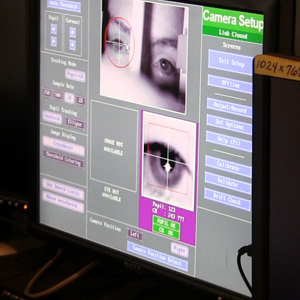What happens in your brain when you hear voices that aren’t there? What happens when you see things that no one else sees around you? People with some mental illnesses struggle every day to separate reality from hallucinations and it appears those hallucinations trigger activity in specific parts of the brain.

Research participants complete a simple task as the
imaging machine records activity in various areas
of the brain. Photo & video credit: Alyssa Metzger
Distinguished Professor of Electrical and Computer Engineering at the University of New Mexico Vince Calhoun leads a research group that is asking those questions. Calhoun is searching for a way to identify and characterize mental illness, specifically schizophrenia using magnetic resonance imaging (MRI) and Magneto encephalography (MEG) scanners that can detect activity in various regions of the brain.
One way to search for signs of schizophrenia is to search for signs of auditory and visual hallucinations. Research has shown that 75 percent of people who have schizophrenia suffer from auditory hallucinations, so Calhoun and his collaborators Jessica A. Turner at the Mind Research Network and Georgia State University and Robert J. Thoma from the UNM Health Sciences Center Department of Psychiatry are scanning the brains of individuals as they hallucinate.
Calhoun is the executive science officer of the Mind Research Network on the UNM campus. His group recently received a $15 million phase II Center for Biomedical Research Excellence (COBRE) grant to continue studying schizophrenia and expand it to include a wider range of disease categories such as bipolar and major depression. They hope to better understand the neural and genetic mechanisms of psychosis and mood disorders.
COBRE researchers are already studying the manifestation of auditory hallucinations. Later in the project they hope to investigate a possible treatment for hallucinations with brain stimulation. Other studies included in the research plan, which is funded by the National Institutes of Health, will be multimodal imaging of the effect of treatment for major depression disorder and imaging of the overlap between schizophrenia and bipolar disorder. The group also plans two algorithm focused projects, one on new approaches for combining complementary types of brain imaging data such as structural and functional connectivity and the other on brain imaging and genetics.
![Tracking Hallucinations inside the Brain [article image]](audio-hallucinations/audio-hallucinations-banner.jpg)
